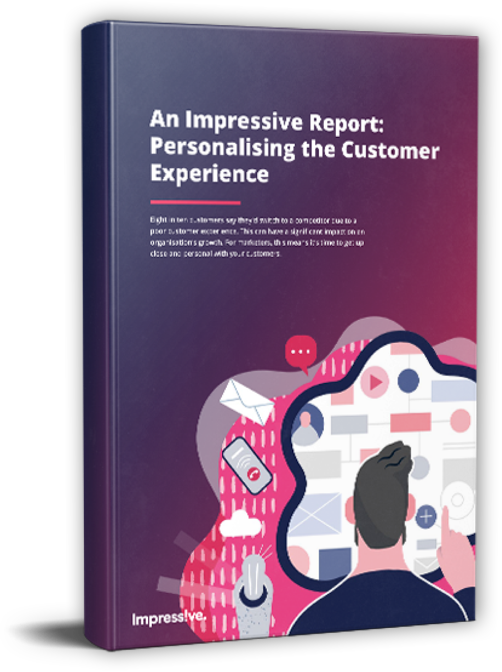Big Data is another term that’s been adopted into the marketing lexicon in recent years – and with good reason. Not only does it provide valuable audience insights, it also allows marketers to learn more about customers on an individual basis.
Consider some of the world’s biggest tech companies – Facebook, Google and Apple, to name a few – a large part of the value they offer comes from their data. They’re constantly analysing the information they receive from their users in order to produce more efficiency and develop new products.
But it isn’t just about analysing, it’s an entire discovery process. Big Data is generally large volumes of unstructured material, so it requires insightful analysts, executives and CMOs to ask the right questions, recognise patterns, make informed assumptions and predict behaviour.
The future of SEO is in artificial intelligence, and Big Data is the first step along the way. Learn more about how it can be used to inform SEO strategies in 2020 and beyond.

What is ‘Big Data’?
Although the concept of Big Data is relatively new, its origins date back to the 1970s, when the world of data was just kicking off and the first data centres were created. Fast forward three decades, and people began to realise the sheer volume of data users were generating through Facebook, YouTube and other platforms. This realisation quickly led to the development of open source frameworks, such as Hadoop and NoSQL, which made Big Data easier to work with and cheaper to store.
Now with the Internet of Things (IoT) an accepted part of life, and smart cities becoming commonplace, there are even more opportunities to gather data on customer usage patterns and product performance.
But what actually is Big Data? Typically, it falls into one of three categories:
Streaming data
Internet-enabled devices, such as smartphones, tablets, laptops, wearables – anything that has sharing permissions accepted.
Social media data
Newsfeeds, posts, likes, comments, names, birthdates, job titles, locations – any information provided to social media platforms is up for grabs.
Publicly available sources
Open data sources, such as the US government’s ‘data.gov’ website, the European Union Open Data Portal, or even the National Library of Australia’s online database, Trove.

Big Data & Privacy
Big Data is used by a number of business sectors, including banking, education, government, healthcare, manufacturing, technology and retail, to name a few. Each sector can utilise the information in different ways, ranging from customer care to product development to marketing.
In recent years, consumers have started to understand the amount of personal data that these organisations have access to. This has led to some backlash, with company privacy policies more closely scrutinised by individuals, and governments stepping in with policy changes (think GDPR).
That being said, Big Data alone is often unstructured. It’s the further categorisation that many consumers are concerned about. Analysts will typically take into consideration the following ‘five V’s. These are:
- Volume: The amount of data. How many pieces are saying the same thing?
- Velocity: How quickly is it coming through?
- Variety: Is it text, audio, visual? Does it need metadata to derive meaning?
- Veracity: How accurate is the data? Can you rely on it?
- Variability: Is the data consistent? Or is it coming in peaks and flows relating to a specific trend or event?
If your organisation is making use of Big Data, it’s important to ensure you’re considering the privacy implications.
Navigate Your Customer’s
Path to Purchase
___
WITH BIG DATA
SEO strategies that deliver.
Google – the Original Big Data Machine
As time goes by, Google continues to shift its focus more and more towards user experience. After all, if users aren’t finding what they want from Google, the entire business model falls apart. One of the ways the company has been doing this is by utilising the vast amounts of data they receive on a daily basis to recognise hidden patterns, uncover search trends, and ultimately better understand what users want.
Not only that, they’ve also started treating published content as data. This has allowed their algorithms to easily analyse web page content and get better at delivering the answers people are looking for. As a result, SERPs are becoming more finely tuned to a user’s query. It was Big Data that supported the development of Google’s algorithm update, BERT. And it also led to the implementation of rich snippets, People Also Ask and a variety of other features and algorithm enhancements.
“Big Data has allowed Google to be more user-oriented. To implement a successful SEO strategy in 2020, organisations need to better understand their customers’ path to purchase, and in particular, the intent behind each query.” – Robert Tadros
How to Use Big Data in Your SEO Strategy
So how do we use Big Data to implement an SEO strategy that’s tailored to your audience and clearly understands the user intent?
Keyword
Finding search terms: While keyword density is not as important as it was even three years ago, ensuring you’re targeting the right terms still is. The benefit of Big Data is that you can understand the thousands of queries your target customers use – not just the odd handful. This offers a bigger set of words and a much broader net to capture your audience.
Understanding intent: Big Data means we don’t have to focus solely on keyword volume and difficulty, we can also choose queries that have a realistic opportunity. This means understanding whether a keyword is navigational, transactional informational, and the type of content needed to increase the likelihood of conversion.
Existing phrases: Not just for new campaigns, Big Data also provides intelligence on current, established terms. By analysing existing search query data, we can find practical ways to improve performance, such as identifying and improving thin or irrelevant content.
Competitive analysis
Big Data provides businesses a better opportunity to conduct more accurate competitor analysis. Rather than making subjective assumptions about what competitors are targeting or what performs best in various industries or verticals, we can instead use tools to see real data on what companies are doing. This allows for more objective decisions about what keywords to target and what tasks to complete to improve SEO efforts.
Machine learning
Perhaps the most exciting development, Big Data provides the ability to teach machines instead of simply programming them. This means SEO marketers can become one step ahead, as the tools can provide teams with insights from the vast volumes of data it receives. If a sudden change occurs, or a trend starts building traction, we’ll be able to take advantage and ensure the organisation is at the forefront of the change.
Big Data Makes for a Better User Experience
Ultimately, Big Data is making it easier for search engines to analyse content and deliver results that are more relevant to the searcher’s needs. It also means SEO marketers and organisations alike are able to better understand their audiences and deliver content that is both relevant and valuable.






